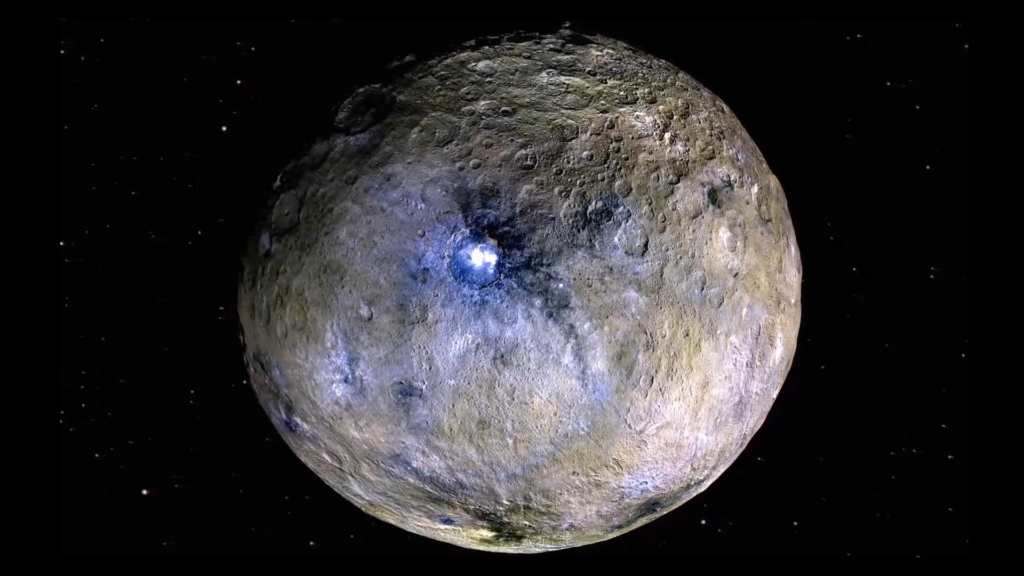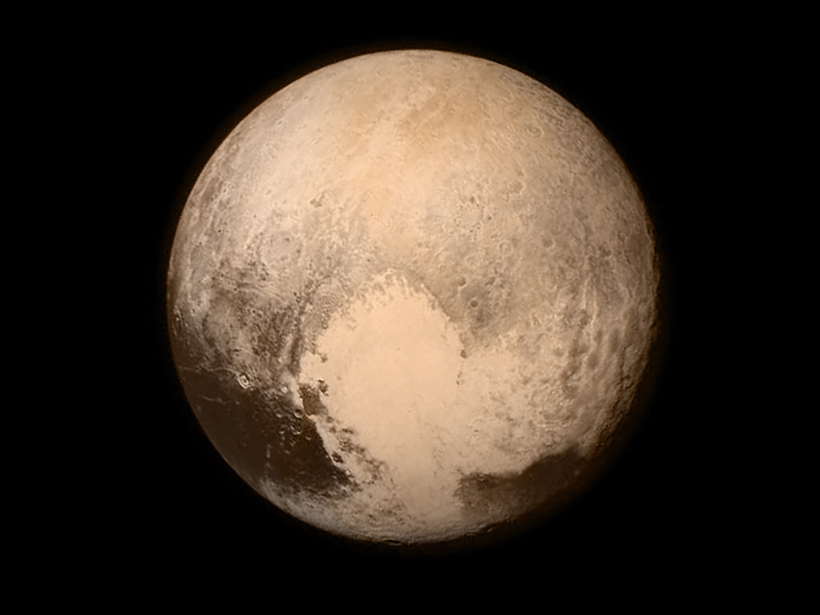What are Dwarf Planets and How Do They Differ from Regular Planets?
Dwarf planets are interesting space objects that are not quite like regular planets. They orbit the Sun, but they share their path with other stuff. In this article, we’ll look at what makes dwarf planets different from planets, their history, and which dwarf planets are in our solar system. We’ll also talk about where they come from, like the Kuiper Belt, and what we might find out in the future. Stay with us to learn more about these unique celestial bodies!

Dwarf planets are fascinating celestial objects that share some characteristics with regular planets but also have distinct differences. According to the International Astronomical Union (IAU), a dwarf planet is a celestial body that orbits the Sun, has sufficient mass for its self-gravity to overcome rigid body forces and assume a nearly round shape, but has not cleared its orbit of other debris. This sets them apart from regular planets, which are larger and dominate their orbits.
Dwarf planets include well-known objects like Pluto, Eris, Ceres, Haumea, and Makemake. While they are similar to planets in some ways, they differ primarily because they share their orbits with other objects. This means that unlike planets, dwarf planets do not have the gravitational influence to clear their orbital paths.
Characteristics that Distinguish Dwarf Planets from Regular Planets
The defining characteristic of a dwarf planet is its inability to clear its orbit. Regular planets, in contrast, have enough gravitational pull to dominate their orbital zones. Other key features of dwarf planets include their smaller size compared to major planets and their location, often in regions like the Kuiper Belt or the Asteroid Belt.
The Role of the International Astronomical Union (IAU) in Planetary Classification
The IAU plays a crucial role in classifying celestial bodies. It established the definitions and criteria that distinguish dwarf planets from planets. For instance, the reclassification of Pluto from a planet to a dwarf planet in 2006 highlighted the importance of these definitions in our understanding of the solar system.

Common Misconceptions About Dwarf Planets
A common misconception is that dwarf planets are just small planets. However, their classification reflects their unique position within the solar system and their role in our understanding of celestial mechanics and formation. They are not just smaller versions of planets but have distinct characteristics that warrant their classification.
The Discovery and History of Dwarf Planets
The story of dwarf planets is one of discovery and redefinition.
Early Observations and the Discovery of Ceres
Ceres was the first dwarf planet to be discovered, identified by Giuseppe Piazzi in 1801. As the largest object in the Asteroid Belt, Ceres was initially classified as a planet before being reclassified as an asteroid and later as a dwarf planet.
The Reclassification of Pluto: From Planet to Dwarf Planet
Pluto, discovered by Clyde Tombaugh in 1930, was classified as the ninth planet until 2006. The reclassification of Pluto to a dwarf planet by the IAU was based on its inability to clear its orbit, marking a significant shift in how we categorize objects in our solar system.

Significant Discoveries: Eris, Haumea, and Makemake
In recent years, Eris, Haumea, and Makemake have been discovered and classified as dwarf planets. Eris, discovered in 2005, is the most massive known dwarf planet, while Haumea is noted for its unusual elongated shape due to rapid rotation. Makemake is known for its extreme distance from the Sun and its icy surface.
The Role of Space Missions in Understanding Dwarf Planets
Space missions like New Horizons and Dawn have provided valuable insights into dwarf planets. New Horizons gave us detailed images and data about Pluto, while the Dawn Mission explored Ceres, revealing its water ice and surface features.
Exploring the Known Dwarf Planets in Our Solar System
Our solar system hosts several dwarf planets, each with unique attributes.
Pluto: The Most Famous Dwarf Planet
Pluto is perhaps the most well-known dwarf planet. With a diameter of approximately 2,377 km, Pluto is located in the Kuiper Belt and has a thin atmosphere composed of nitrogen, methane, and carbon monoxide. It has five known moons, including Charon, its largest moon.
Eris: The Most Massive Dwarf Planet
Eris is notable for being the most massive dwarf planet, with a diameter of about 2,326 km. It has a highly reflective surface and orbits the Sun once every 558 years. Discovered in 2005, Eris played a key role in the reclassification of Pluto.
Ceres: The Largest Object in the Asteroid Belt
Ceres is the largest object in the Asteroid Belt and has a diameter of about 946 km. The Dawn Mission revealed that Ceres has significant amounts of water ice and features like the bright spots on its surface, which are thought to be salt deposits.

Haumea: The Rapidly Rotating Dwarf Planet
Haumea is unique for its elongated shape, caused by its rapid rotation. It has a diameter of about 1,960 x 1,518 x 996 km and is known to have two moons. Haumea is located in the Kuiper Belt and is characterized by its icy surface.
Makemake: The Cold and Distant Dwarf Planet
Makemake is one of the most distant dwarf planets, with a diameter of about 1,430 km. It is covered with methane ice and has a thin atmosphere. Makemake was discovered in 2005 and is also located in the Kuiper Belt.
The Kuiper Belt and Its Relationship with Dwarf Planets
The Kuiper Belt is a region of the solar system beyond the orbit of Neptune, where many dwarf planets reside. This region is crucial for understanding the distribution and characteristics of dwarf planets.
Understanding the Kuiper Belt and Its Formation
The Kuiper Belt is a disc-shaped region that contains a large number of small, icy bodies. It is thought to be a remnant of the early solar system and a source of dwarf planets.
The Role of the Kuiper Belt in Housing Dwarf Planets
Many of the known dwarf planets, including Pluto, Haumea, and Makemake, are located in the Kuiper Belt. This region provides a stable environment for these objects and helps us learn more about the early solar system.
Kuiper Belt Objects (KBOs) and Their Connection to Dwarf Planets
Kuiper Belt Objects (KBOs) include a variety of small celestial bodies, among which dwarf planets are classified. The study of KBOs helps astronomers understand the distribution and characteristics of dwarf planets.
The Future of Dwarf Planet Exploration
The exploration of dwarf planets is an exciting field with many opportunities for discovery.
Upcoming Missions and Research Aimed at Dwarf Planets
Future missions and research are expected to focus on uncovering more about dwarf planets and their environments. Advancements in technology will play a crucial role in these explorations.

The Potential for Discovering New Dwarf Planets
As our observational tools improve, the potential for discovering new dwarf planets increases. These discoveries will enhance our understanding of the solar system.
How Advancements in Technology Are Shaping Our Understanding
Technological advancements, such as more powerful telescopes and spacecraft, are critical in advancing our knowledge of dwarf planets. These tools help scientists gather detailed data and make new discoveries.
The Importance of Dwarf Planets in Understanding Our Solar System
Dwarf planets are vital for our understanding of the solar system’s formation and evolution.
What Dwarf Planets Teach Us About Planetary Formation
Studying dwarf planets provides insights into the early solar system and planetary formation processes. They help us understand the conditions and materials that shaped our solar system.
The Significance of Dwarf Planets in the Broader Context of Astronomy
Dwarf planets play a key role in astronomy by offering clues about the distribution and characteristics of small celestial bodies. They contribute to our knowledge of the solar system’s architecture.
How Dwarf Planets Contribute to Our Knowledge of the Solar System’s Evolution
The study of dwarf planets helps us trace the evolutionary history of the solar system. Their unique properties and locations provide valuable information about the conditions that existed in the early solar system.
FAQs about Dwarf Planets
What is a Dwarf Planet?
A dwarf planet is a celestial body that orbits the Sun and has enough mass to assume a nearly round shape, but it has not cleared its orbit of other debris. Unlike regular planets, dwarf planets share their orbital paths with other objects. The International Astronomical Union (IAU) classifies these objects based on these criteria.
How Are Dwarf Planets Different from Regular Planets?
The main difference between dwarf planets and regular planets is their ability to clear their orbits. Regular planets, like Earth and Mars, have sufficient gravitational pull to dominate their orbital zones. Dwarf planets, however, do not have this capability and often share their orbits with other celestial bodies.
What Are the Most Well-Known Dwarf Planets?
Some of the most well-known dwarf planets include Pluto, Eris, Ceres, Haumea, and Makemake. Each of these objects has unique characteristics and orbits in different regions of the solar system. Pluto is famous for its reclassification from a planet to a dwarf planet, while Ceres is the largest object in the Asteroid Belt.
Why Are Dwarf Planets Important to Astronomy?
Dwarf planets are important because they help scientists understand the early solar system and planetary formation. By studying these objects, astronomers can learn more about the conditions that existed when the solar system was forming. They also provide insights into the composition and evolution of smaller celestial bodies.
What Are the Future Missions to Explore Dwarf Planets?
Several future missions aim to explore dwarf planets to gain more information about these intriguing objects. Spacecraft like the New Horizons mission, which explored Pluto, and the Dawn Mission, which studied Ceres, have provided valuable data. Upcoming missions will continue to investigate these distant worlds and may discover new dwarf planets.
Dwarf planets are crucial for understanding our solar system’s formation and evolution. From Pluto to Ceres, each one offers unique insights into the cosmos. We hope you enjoyed learning about these fascinating objects. Feel free to leave comments, share this article, or explore more content on our site for further discoveries about space!
Sources:








